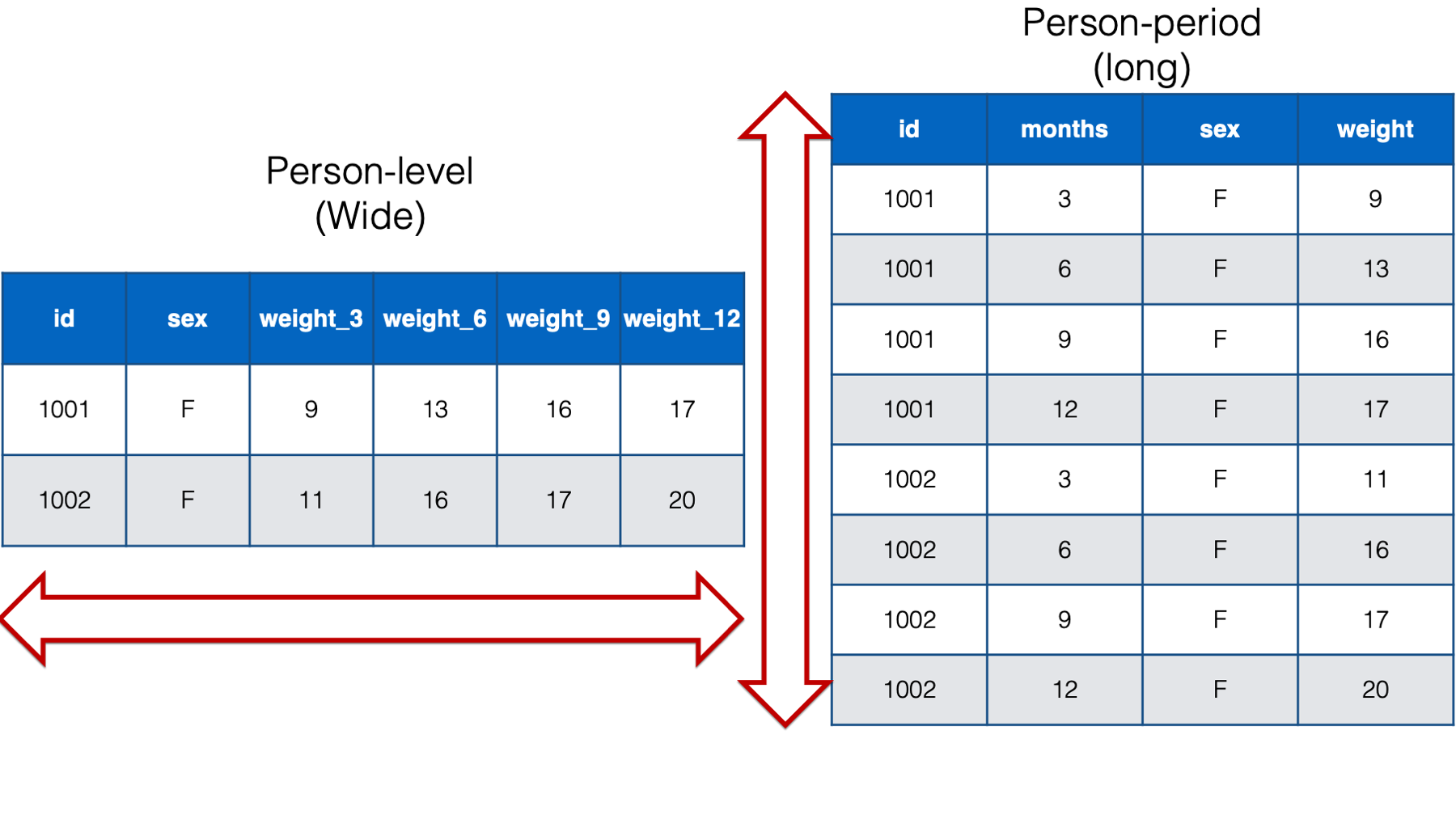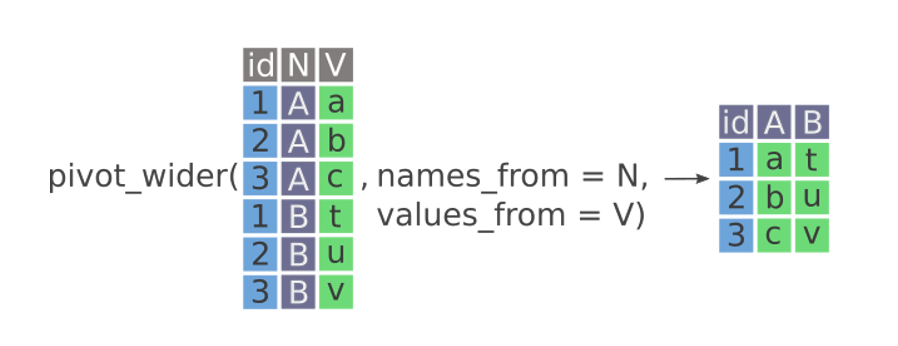dplyr: joins and pivots
Lecture 9
NC State University
ST 295 - Spring 2025
2025-02-06
Checklist
– Have you cloned the today’s AE repo?
– Are you keeping up with prepare material?
– Homework-2 is live! Due Feb 10th at 11:59
-- Late window Feb 11th at 11:59
– Quiz-4 released today at noon!
Warm up
What would left_join(x,y) produce?
full_join()?
Warm up
Read the following code as a sentence
AE
– if_else() vs case_when()
– joining by > 1 variable
– pivots
Joins Summary
– There are many ways to join data
– Let the join criteria choose the function for you
– Data sets are joined by a “key”
– The key(s) default to common names across data sets unless specified
– Can join on variables with different names by using the = sign by = c("variable1" = "variable2")
Forms of Data
Data Format (Wide vs Long)
– Wide data contains values that do not repeat in the first column
– Long data contains values that do repeat in the first column

Data Format (Wide vs Long)
– Which have we typically used to create plots in this class?

Tidy Data
There are three interrelated rules that make a dataset tidy:
Each variable is a column; each column is a variable.
Each observation is row; each row is an observation.
Each value is a cell; each cell is a single value.
Motivation
– Sometimes, data are not in this format…
pivots
– pivot_longer
– pivot_wider
pivot_wider
pivot_wider
– Making tables for quick comparison / display purposes
– names_from
– values_from

